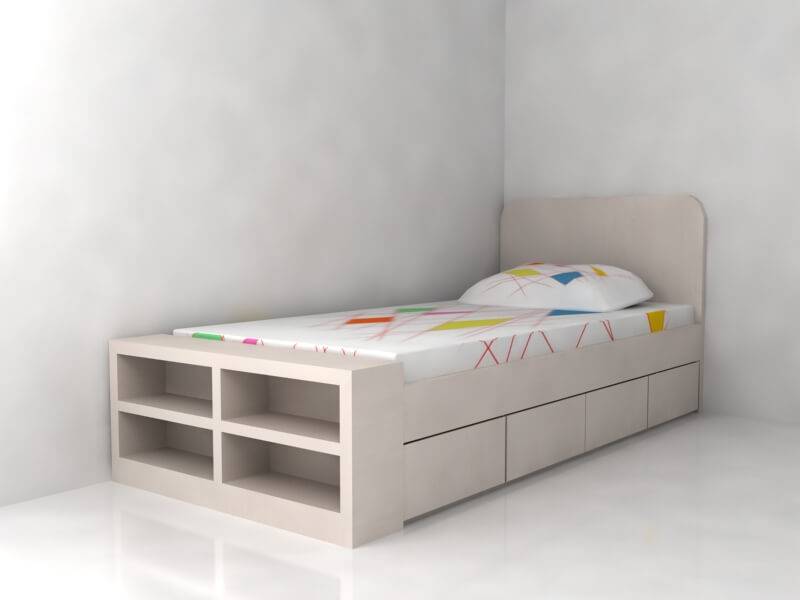While adults yearn for more sleep, children often lean towards playtime or watching TV. This shift in priorities can pose challenges for parents who seek to balance these activities. One way to address this issue is by creating a comfortable and appealing bedroom environment for your child.
Similar to adults, children desire a bedroom where they can spend extended periods. What features can make their room more inviting and help them stay there? Apart from design, the furniture in the room, particularly the child’s bed, is crucial.
The market offers a wide array of children’s beds, available in various shapes and attractive colors. However, careful selection is essential. Opt for a bed that is durable and can be used into the teenage years. While the initial cost may be higher, the long-term quality is worth it.
What should you consider? Here are some tips for selecting a child’s bed that can last into their teenage years, allowing you to be more economical in your purchases.
1. Prioritize Safety
The foremost aspect to consider when choosing a child’s bed is safety. No matter how appealing the design or style is, it should not hinder your child’s sleep. Familiarize yourself with your child’s sleeping patterns and movements.
If your child has irregular sleep habits or tends to move a lot during sleep, ensure that every edge of the bed is smooth and safe to prevent accidents.
Numerous materials, such as wood and metal, are used in bed production. Verify if the edges are smoothed to ensure safety. If so, proceed with the purchase and introduce the bed to your child’s room.
2. Opt for a Basic Design
Even though children may currently enjoy various cartoons and their characters, it does not mean you should select a cartoon-themed bed. Avoid character-themed beds and excessively vibrant colors. These options become less appealing as children grow and mature.
As children age, they will naturally outgrow character-themed beds. Opt for a basic design, allowing you to freely change the beddings as your child’s preferences evolve. Basic models can last into the teenage years.
3. Choose a Standard Size
In addition to the previous tips, ensure the bed is of standard size. This ensures that your child can use it until they reach their teenage years. Keep in mind that children grow rapidly. If you buy a small-sized bed, you may need to replace it in a few years because it can no longer accommodate your child.
4. Match the Bed to the Room’s Ambiance
If you find the previous tips somewhat confusing, you can decide on the room’s ambiance first. Once the room’s design and ambiance are determined, selecting a bed that complements it becomes much easier.
When choosing the bed, avoid colors that are too dark, as this may create a gloomy atmosphere. Conversely, overly bright colors can be distracting and interfere with your child’s ability to focus on activities, such as studying.
5. Consider Bunk Beds
Bunk beds are an excellent choice if you have more than one child, even if the room size is limited. They save space and are particularly efficient in small or minimalist spaces.
Safety is paramount when using bunk beds. Ensure the materials used are sturdy, preventing accidents, and ensuring a comfortable night’s sleep.
6. Invest in a Quality Mattress
It’s essential to complement the child’s bed with a comfortable, safe, and durable mattress. As children tend to engage in physical activities like jumping on the bed, opting for a high-quality mattress is vital.
By selecting a high-quality mattress, you will avoid having to replace it within just a few years.
7. Consider Additional Features
Modern beds for children often come with various additional features. Some are designed to be hypoallergenic or have other advantages. When making your choice, keep these additional features in mind for your child’s comfort. Hypoallergenic features can be particularly beneficial to help protect your child from dust and allergies.
8. Opt for Storage Space
If your child’s room is not very spacious, consider a bed with built-in storage space. This storage space can accommodate various small items like toys, books, school supplies, and clothing. It helps to keep the room tidy and organized.
9. Buy New, Not Used
While many parents seek to save on expenses, buying a new bed is advisable. Second-hand beds may have worn components, which can result in the need for a replacement sooner than expected. To avoid future disappointments, consider purchasing a new bed.
Keeping these tips in mind when selecting your child’s bed ensures that your investment will last for years to come. Happy shopping, and may your choice prove to be beneficial in the long run.








